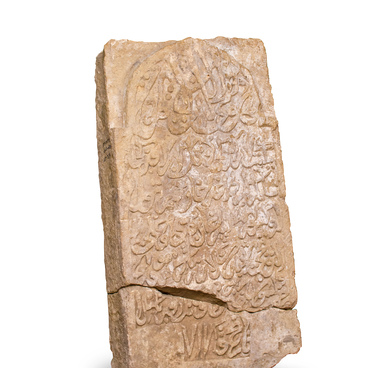Various crafts were developed in the cities of Volga Bulgaria. Items of Bulgar craftsmen were valued far beyond this medieval state. On the territory of ancient cities, archaeologists have discovered metallurgical and pottery kilns, blacksmith workshops, numerous craft tools, blanks, and various categories of items — from simple cauldrons to elaborate jewelry.
In jewelry, craftsmen have mastered the production of gold, silver, precious and semi-precious stones. In the museum exposition you can see a variety of stone molds for casting, metal matrices for stamping, pressing and embossing. The artisans used high-quality bronze tongs to work with small parts. Bulgars also were masters of complex techniques of granulation and filigree. Granulation meant soldering the smallest balls onto a prepared ornament, and filigree meant soldering an ornament made of thin twisted threads. The most commonly used threads were golden. They were pulled from the ingot manually using a special tool, which consisted of a steel plate with tiny holes. Bulgars could draw a kilometer thread from one gram of gold.
Twisted and platy bracelets, crescent earrings, signet rings, and temporal pendants were the favorite jewelry of women. They were made mainly of silver, less often of gold.
Representatives of the Finno-Ugric group of people lived in Volga Bulgaria. Noisy jewelry was popular among them. In pre-Islamic times, the ringing of metal was believed to drive away evil spirits and protect a person. Therefore, the noisy type of jewelry was distributed not only within the region but also far beyond it, where they practiced shamanism or totemism, belief in totems, the patrons of the clan.
A noisy pendant was attached to women’s braids or a belt. Also, archaeologists have found bronze objects, that decorated shoes.
The pendant consisted of a triangular frame with a loop, they were connected by a vertical jumper. On the lower edge of the triangle, there were three rings for attaching eight-shaped links with pear-shaped pendant bells. They made a characteristic noise.
In jewelry, craftsmen have mastered the production of gold, silver, precious and semi-precious stones. In the museum exposition you can see a variety of stone molds for casting, metal matrices for stamping, pressing and embossing. The artisans used high-quality bronze tongs to work with small parts. Bulgars also were masters of complex techniques of granulation and filigree. Granulation meant soldering the smallest balls onto a prepared ornament, and filigree meant soldering an ornament made of thin twisted threads. The most commonly used threads were golden. They were pulled from the ingot manually using a special tool, which consisted of a steel plate with tiny holes. Bulgars could draw a kilometer thread from one gram of gold.
Twisted and platy bracelets, crescent earrings, signet rings, and temporal pendants were the favorite jewelry of women. They were made mainly of silver, less often of gold.
Representatives of the Finno-Ugric group of people lived in Volga Bulgaria. Noisy jewelry was popular among them. In pre-Islamic times, the ringing of metal was believed to drive away evil spirits and protect a person. Therefore, the noisy type of jewelry was distributed not only within the region but also far beyond it, where they practiced shamanism or totemism, belief in totems, the patrons of the clan.
A noisy pendant was attached to women’s braids or a belt. Also, archaeologists have found bronze objects, that decorated shoes.
The pendant consisted of a triangular frame with a loop, they were connected by a vertical jumper. On the lower edge of the triangle, there were three rings for attaching eight-shaped links with pear-shaped pendant bells. They made a characteristic noise.

